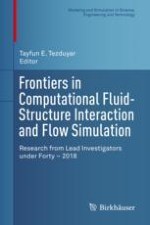2018 | OriginalPaper | Chapter
Recent Advances in ALE-VMS and ST-VMS Computational Aerodynamic and FSI Analysis of Wind Turbines
Authors : Artem Korobenko, Yuri Bazilevs, Kenji Takizawa, Tayfun E. Tezduyar
Published in: Frontiers in Computational Fluid-Structure Interaction and Flow Simulation
Publisher: Springer International Publishing
Activate our intelligent search to find suitable subject content or patents.
Select sections of text to find matching patents with Artificial Intelligence. powered by
Select sections of text to find additional relevant content using AI-assisted search. powered by
